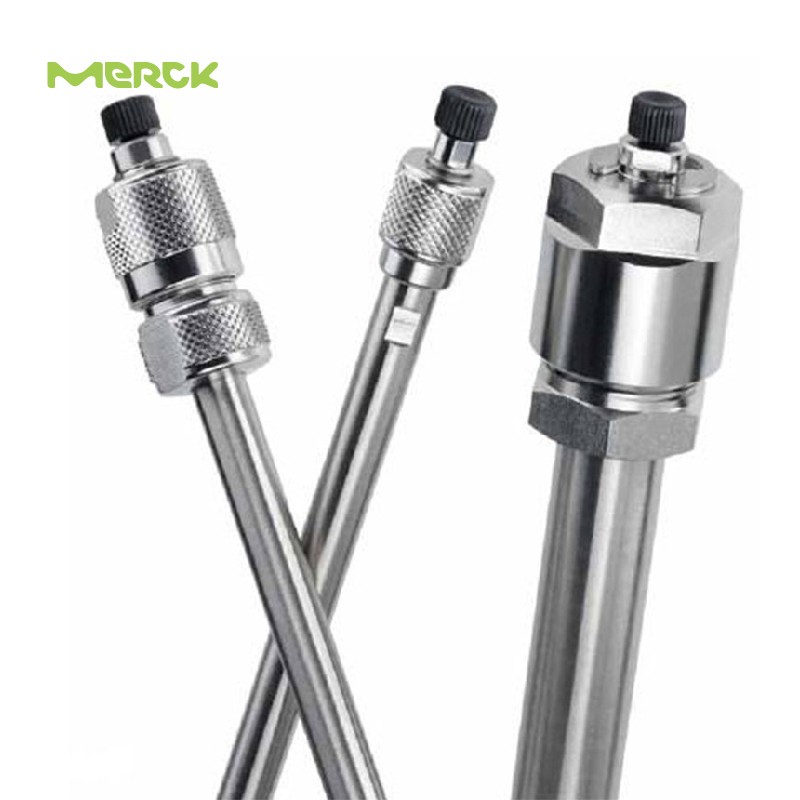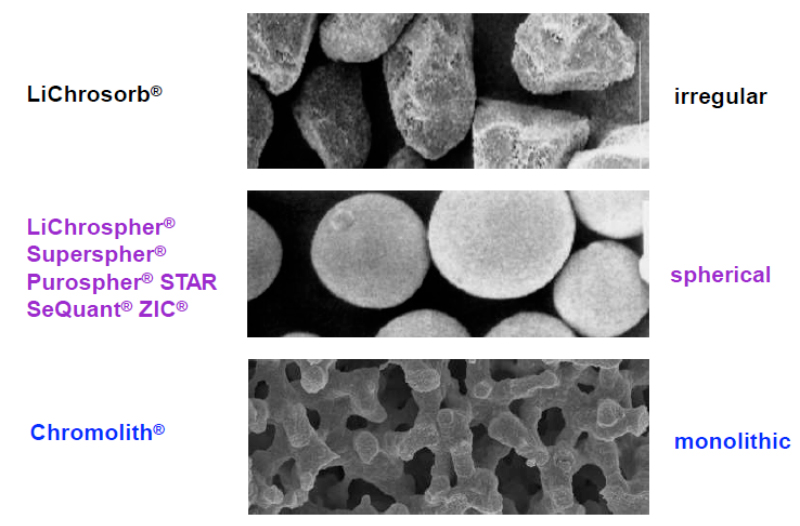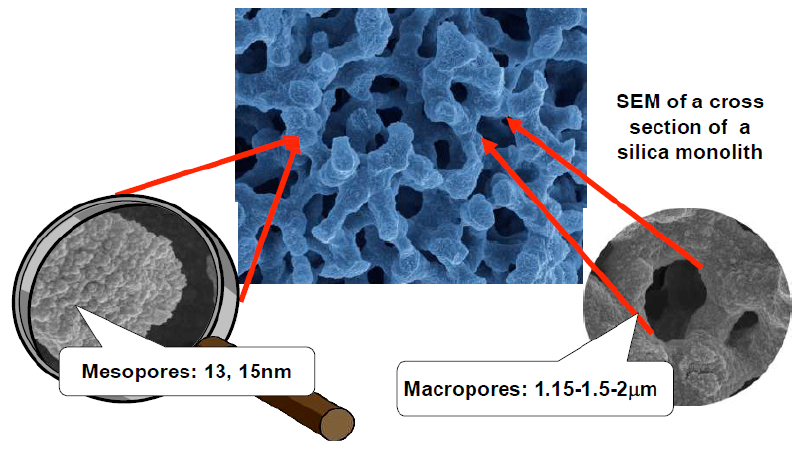
With many years of investment, Merck Life Sciences has been developing columns to guarantee reliable and reproducible HPLC separations, even in the most challenging analysis; as a result, analysts provide a comprehensive range of high-quality HPLC columns for demanding research, development and quality control analysis in food, pharmaceutical, environmental, petrochemical and clinical applications.
Chromolith® columns enable ultra-fast and robust separations with standard HPLC systems thanks to unique and patented monolithic silica technology; Zwitterionic SeQuant® ZIC®-HILIC technology allows all polar and hydrophilic compounds to be operated under different separation conditions, resulting in excellent HPLC separations; Purospher® is preferred for many different applications for reverse phase HPLC and UHPLC method development due to its optimum selectivity.
LiChrosorb®, LiChrospher® and SuperSpher®, the well-known HPLC column brands of Merck Life Sciences, continue to deliver excellent results. In addition, ChiraDex® columns specially developed for chiral compounds, a very important application for the pharmaceutical industry, are also included in the product portfolio.
MERCK consists of LiChrosorb®, LiChrospher®, Superspher®, Purospher® STAR, SeQuant® ZIC® and Chromolith® columns, which are produced by modifying various silica fillers with various functional groups (C18, C8, etc.) for different analytical purposes. offers a wide range of HPLC columns.

ChromolithR
Chromolith® columns enable ultra-fast and robust separations with standard HPLC systems thanks to unique and patented monolithic silica technology. It can be used with standard HPLC systems as well as with UHPLC and LCMSMS systems.
Unlike conventional particulate fillers (5um, 3um, 2um, etc.), monolithic columns consist of a one-piece polymeric silica gel filler. Mesopores of 13-15nm pore size on Polymeric Silica Gel provide low column back pressure at high flow rates, while macropores of 1.15-2um pore size increase column selectivity.

Especially in biological samples such as blood, serum, viscous species such as cream, pomade, syrup and complex matrix food samples, Chromolith columns are frequently preferred because they have a much longer life (about 3 times) than classical particle filled columns.
The Chromolith® product portfolio includes columns of different polarities and selectivities modified with various functional groups such as RP-18 (C18 / ODS), RP-8 (C8), NH2, CN, Phenyl.
Purospher®
Purospher® columns provide users with a high peak symmetry, wide pH operating range and excellent separation with a metal-free ultra-high purity silica filler.
Columns of Purospher® silica support are modified with various functional groups such as RP-18 (C18 / ODS), RP-8 (C8), NH2, CN, Phenyl with different polarity and selectivity to obtain excellent peak shape and reliable results for all kinds of analytes. it is.
LiChrosorb®
LiChrosorb® HPLC columns with irregular and type A silica have been manufactured for more than 25 years and are still widely used in many USP methods.
LiChrospher® / Superspher®
LiChrospher® and Superspher® HPLC Columns are widely used in many validated methods and USP / EP methods. LiChrospher® and Superspher® spherical silica fillers are modified by various functional groups such as RP-18 (e), RP-18, RP-8 (e), RP-select B, Diol, CN, NH2, PAH, ChiraDex. Polarized and selective columns provide excellent peak shape and reliable results for all analyte species.
SeQuant® HILIC
The separation of many polar (hydrophilic) species, from small peptide structures to ionizable species, from metabolites to carbohydrates, is quite cumbersome with NP-LC and RP-LC species. Chromatographic separation technique called HILIC (Hyrophilic Interaction Liquid Chromatograpy) is widely preferred for the separation of such polar species.
Merck's unique ZIC®-HILIC technology is based on a stationary phase containing a highly polar and covalently bonded zwitter ionic functional group that provides higher stability and stronger separation than conventional silica or amino phases.


